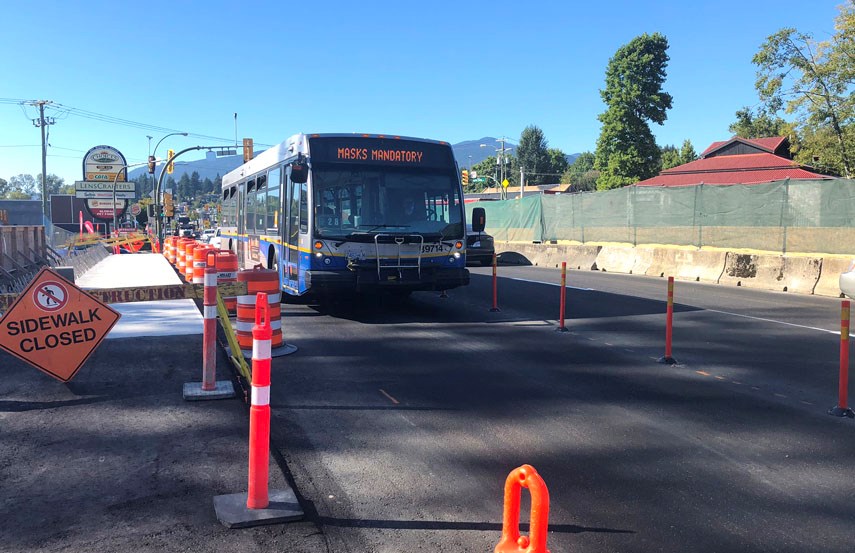After six months of a tight squeeze, things are opening up on the new Mosquito Creek Bridge.
Crews shut down Marine Drive Wednesday night to transition traffic from the older northern portion of the bridge to the newly finished southern side.
“We've hit a half-way milestone,” said Karyn Magnusson, deputy director of engineering, parks and environment. “I would say the project's going really well. With any large infrastructure project, you run into things that you learn along the way, but we are for the most part on schedule. And we're seeing traffic moving relatively well through that neighbourhood.”
With the south side of the bridge opening, there are now two lanes of westbound traffic instead of just one. Eastbound traffic will still be reduced to one lane until the second phase of the project is completed sometime near the end of 2020, Mangusson said.
“We've been able to retain pedestrian access both on the north and the south side of the bridge, because we're seeing a lot of pedestrian and cyclist volume continuing to use the corridor,” she added.
Drivers of heavy trucks will no longer have to detour down to West First Street although turning restrictions for drivers at Fell Avenue will look much the same as they have since March.

When the 1952 bridge is replaced, it will have four vehicle lanes plus bus priority lanes, better pedestrian and cyclist facilities, and a new multi-use path running under Marine Drive to connect with Mosquito Creek Trail.
The city hopes to have the project finished by the spring of 2021.
Prior to the pandemic, that portion of the Marine Drive corridor was seeing 24,000 vehicle crossings and 50,000 transit passengers pass through per day.
“As the new roadway is completed, we will be looking to create transit priority as much as possible because transit ridership along that corridor is really high and we want to make sure that transit riders are getting a good shake of it,” Magnusson said.
According to the Ministry of Transportation and Infrastructure, traffic levels across the region dropped by about 30 per cent following the declaration of a public health emergency. But the number of people getting in the car has been going back up and is now within five per cent of pre-COVID levels.
Since 2018, the budget for the project grew from $8 million to $13 million. A federal grant will cover $3.87 million of the total. TransLink has also chipped in $1.65 million. City staff have indicated they will seek more funding for the project in the 2020 budget.



